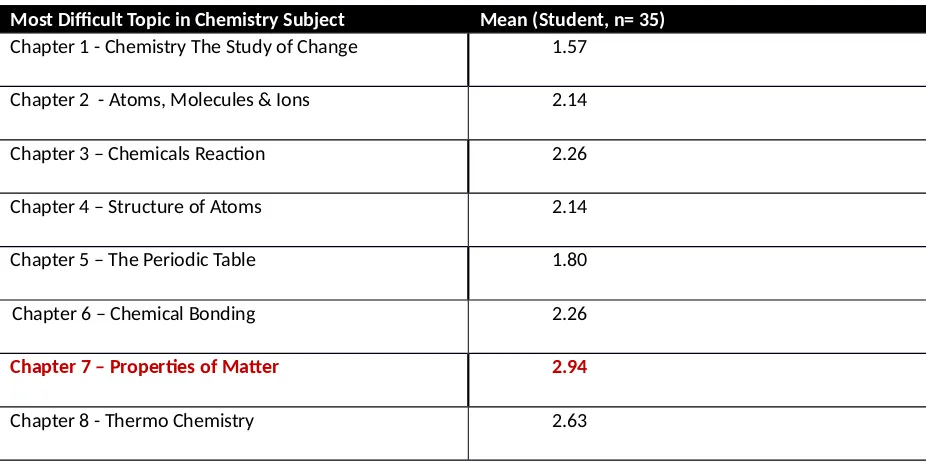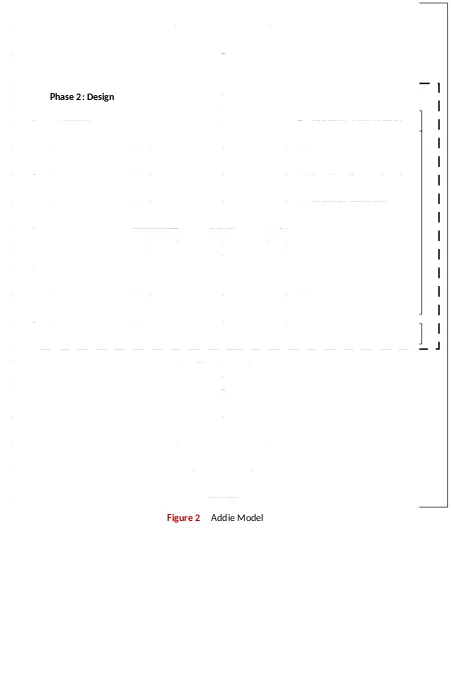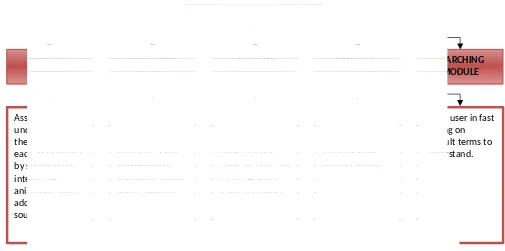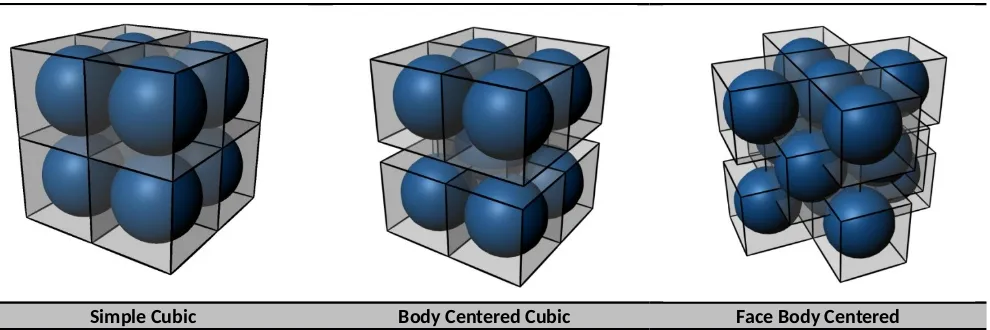3D Approach in the Development of
Chemistry Subject at UTeM: Atom Cubic
Norasiken Bakar, Nuraziera Mohd Hatta, Faaizah Shahbodin Faculty of Information and Communication Technology,
University Technical Malaysia Melaka, MALAYSIA
Abstract
This research highlights the development of 3D approach in learning for chemistry subject. Chemistry is one of the compulsory subjects for all undergraduate students in science fields. There are a number of methods to deliver chemistry lessons especially in classes of basic molecular formation theories. Throughout the years, various teaching methods have been adopted to assist students to better understand in learning chemistry subject. Current knowledge delivery in education is dynamically changing to more flexible and reliable. This research attempt to alternatively present new ways of learning chemistry subject by using 3D approach to encounter the problems found from the survey and interview done. The result of interviewed with chemistry lecturer and the students from the faculty of mechanical engineering, Universiti Technical Malaysia Melaka (UTeM), shows that the topic of properties of matter is slightly difficult in visualizing the arrangement of the atoms in the cubic cells. Learning in conventional approach often use the whiteboard and textbook that only shows text and graphic to show the arrangement of the atoms in cubic cells. The arrangement of the atoms in the cubic cells are required learners’ knowledge and metal image, so by using 3D technology approach is possible to applied to assist learners in the topic. This research addresses the impact of using 3D approach in teaching and its advantages over current approach. Besides, 3D model can be rotated around any axis, panned or zoomed in any direction. With 3D viewing also, students are able to position and recognize the object with relation to others scene, enabling a better and more complete visualization and interactive learning process.This research is trying to use the learning based on computer for 3D concept in chemistry subject. Target user for this research is first year student from faculty of mechanical engineering from UTeM and also the chemistry lecturer. This research will increase students and lecturer in easy visualizing this subject. In other word, educational level will be increase parallel with the information technology. Therefore, learning based computer is build to increase the efficiency the student ability of visualization with the aid of multimedia elements. Beside, 3D model atom assists learners to gain more understanding in molecular structure.
Nuraziera, Norasiken, Faaizah (2012). 3D Approach in the Development of Chemistry Subject at UTeM: Atom Cubic. Malaysian Journal of Educational Technology, 12(4), pp. 1-4.
Introduction
ability in delivering text, video, sound, animation and high resolution graphic. An information delivery effect created by combination of images, texts, and sounds has shown the significance everlasting compared to listened or read (Schmalz, 2008). Combination of these elements will create an interesting presentation and make the information conveying more meaningful. Teaching media that using multimedia technology are able to get the student’s attention, get the idea, and gain the complex information and help to prevent lack of time, size and space. Computer-based teaching media that has interactive or linear movement can able the user to access the information from one segment to another without following the flow.
Computer based multimedia material offers different means of supporting 3D information representations (Huk, 2006). Viewing dynamic and 3D animations is assumed to be a possible way of changing and improving students’ incomplete mental models (Wu & Shah, 2004). Nevertheless, based on various researchers (Gerjets & Scheiter, 2003; Paas et al., 2003a), it is found that 3D models may lead to cognitive overload problems in hypermedia-learning environments in particular, as such environments are assumed to generate a heavy cognitive load. On the other hand, the findings of Ferk et al. (2003)research revealed that some representations of molecular 3D structure are better understood and can be more readily used by students in solving tasks of different complexity. To all students the concrete representations seem to be more useful than abstract representations.
The term teaching refers to the methodology or strategies chosen in arranging the information, activities, approaches or media in order to help the students achieve the objective stated earlier (Zaleha, 2008). Learning is the change in behavior in the students that occurs because of their interaction with the surrounding (Baharudddin, 2006). So by using computer enhance the learning environment making the learning more practical, improving the learner’s access to learning, increasing the focus of higher order skills. Other than is to make possible to adapt learning programme more nearly to the needs of individual. One way of teaching for understanding is to have students engage in information processing and problem solving activities that focus on real-world experience, and daily-life chemistry.
Problem Statements
One of the problems when student learn chemistry is students do not understand the topic well because it needs students to imagine the formation of the structure and their arrangement (Sun, 1997) Each people have a different ability to learn and capture the information and it is related to their learning style which is defined as the way a person takes and process the knowledge. By including 3D element in this courseware, it is use to stimulate student’s interest in some content of the learning and as a supplement to classroom teaching, the graphics and animation make the subject come alive, so that learning the subject is much easier, animation, voice and video clips are used to implement various teaching strategies such as tutorials, activities and games.The ability to visualize has enable the student to understand the topic better. Besides that, the simple animation can be use in this courseware to make the learning of content in the class more interactive. With the development of computer technology multimedia methods are been increasingly used in teaching practice. A multimedia courseware can combine sound and pictures with knowledge. This reinforces the fact that students retain 50% of what they see and hear, as the use of multimedia technology gives students more information than just writing on the blackboard and increase the chance of active learning (Huo, 2006).
Objectives of Study
The main purpose of this research is to measure the effectiveness on using 3D environment in study and there are several ideas on the reason of developing this 3D courseware. . The objectives that included are:
i. To develop interactive 3D-Atomic Cubic.
ii. To test the effectiveness of 3D elements in 3D-Atomic Cubic courseware in absorbing science process in Chemistry subject.
iii. To measure the effectiveness of the teaching by using 3D element and virtual reality approach in the subject of mechanical engineering Chemistry through a case study with engineering students of Universiti Teknikal Malaysia Melaka, UTeM.
iv. To measure if there is any relationship between student’s performance and preferences.
Methodology
The methodology used to develop a courseware is ADDIE (Analyze, Design, Develop, Implement and Evaluate) model. The ADDIE instructional design model is a basic model that holds true for any type of learning, including Web-based (Hall, 1997). ADDIE is a simple and includes all the components found in all other instructional design models. ADDIE is five-phase systematic model used to create sound instructional products for a variety of educational settings. Each phase represents a series of tasks that help to ensure development efforts stay on tract, on time, and on target. Completing each phase satisfactorily increase the chance that the information presented ultimately remains relevant to the needs of the audience. Each phase of the ADDIE model is an important element of the instructional design process. In each phase, the instructional designer makes decisions that are critical for ensuring the effectiveness of the instructional experience.
Figure 1 Addie Model
Results, Discussion & Recommendations
in any direction. With 3D viewing also, students are able to position and recognize the object with relation to others scene, enabling a better and more complete visualization and interactive learning process.
Table 1 Most Difficult Topic in Chemistry Subject
Most Difficult Topic in Chemistry Subject Mean (Student, n= 35) Chapter 1 - Chemistry The Study of Change 1.57
Chapter 2 - Atoms, Molecules & Ions 2.14
Chapter 3 – Chemicals Reaction 2.26
Chapter 4 – Structure of Atoms 2.14
Chapter 5 – The Periodic Table 1.80
Chapter 6 – Chemical Bonding 2.26
Chapter 7 – Properties of Matter 2.94
Chapter 8 - Thermo Chemistry 2.63
Based on the survey, almost of the student were identified was having problems in the topic of using visualization. As shown in above Table 1, most of the students having difficulties in chapter 7 with the highest mean is equal to 2.94 which is the subject is about how to visualize the arrangement of the atoms in a cubic cell and how to create formula of the atomic radius and the edge of the length.
Development Methodology of Atom Cubic Prototype
Start
Analysis
Atomic Cubic Model
Chemistry approach Learning Modules Learning sequence Teaching & Learning via Multimedia
Learning approach
Design
End Evaluation Implementation
Development Learning
Outcomes
Content of the syllabus
Moral values Constrain
Evaluation Content Laerning Modules
Atomic Cubic Modules
ATOM CUBIC COURSEWARE
CHEMISTRY
APPROACH LEARNING MODULES LEARNING SEQUENCE
TEACHING &
MODULE EXPLORING MODULE MIND TEST MODULE SEARCHING MODULE
Assist user to
Figure 3 Instructional Design Model
Figure 4 Instructional Design Model Development of the 3D Atom
The development phase in the ADDIE model addresses the tools and processes used to create instructional material (Strickland, n.d). The production of the content and learning materials based on the Design phase. Development phase in this research is to produce a learning plan and learning tools. In this phase, integration of all multimedia components or elements is done such as audio, video, text and others. The main part of the courseware is also done in this phase which is 3-dimensional part. Figure 5 shows the development of the 3D atom in each of the cubic type and figure 6 show the development of the 3D atom of the edge in each cubic type.
Simple Cubic Body Centered Cubic Face Body Centered
Figure 5 Development of the 3d Atom in Each of the Cubic Type
Simple Cubic Body Centered Cubic Face Body Centered
Figure 6 Development of the 3D Atom of the Edge in Each Cubic Type
Conclusion
Bibliography
Amina Minhas (2005). “ Role of Three Dimensional(3D) Modelling as a Pedagogic Tool for Heritage and Tourism Studies.”
Baharuddin Aris (2006). “Learning Goal Programming Using an Interactive Multimedia Courseware.” Journal of Instructional Technology. 3. 85-95.
Ferk, V., Vrtacnik, M., Blejec, A., & Gril, A. (2003). Students’ understanding of molecular structure representations. International Journal of Science Education, 25(10), 1227–1245.
Gerjets, P., & Scheiter, K. (2003). Goal configurations and processing strategies as moderators between instructional design and cognitive load: Evidence from hypertext-based instruction. Educational Psychologist, 38, 33–41.
Halimah (1999).“Multimedia Learning in Computer Science.” Jurnal Pendidikan. 2. 1-5.
Hall, G.K (1997). “The systematic Design of Instruction.” Journal of learning. 4. 23-26.
Huk, T. (2006). Who benefits from learning with 3D models? the case of spatial ability. Journal of Computer Assisted Learning, 22, 392–404.
Perdomo,J.L. (2005). “Interactive 3D Visulization As A Tool for Construction Education.”
Schmalz, M.S. (2008). “IT/CS Workshop in Multimedia Courseware.” Journal of Teaching Technical Concepts. 15. 23-30.
Syazwan Noordin(2010). “Survey on Visualization:Lines and Planes in 3-Dimension.”
Sun, T.T and Lian, K.T (1997). “CHEMMAT: Addaptive Multimedia Courseware for Chemistry.” Journal of Science and Technology. 6. 71.
Wongsirichot,T.(2010). “3D Covalent Bonding Molecular Structure Stimulating Program Using the VSEPR Theory for Undergraduate students.”
Wu, K., & Shah, P. (2004). Exploring visuospatial thinking in chemistry learning. Science Education, 88, 465–492.
Yuqiu, H. (2006). “Applying Contemporary Education Strategies to Motivate Students’ Interest in Studying Physical Chemistry and to Develop Lifelong Learning Skills.” China: The China Papers. 23-26.



